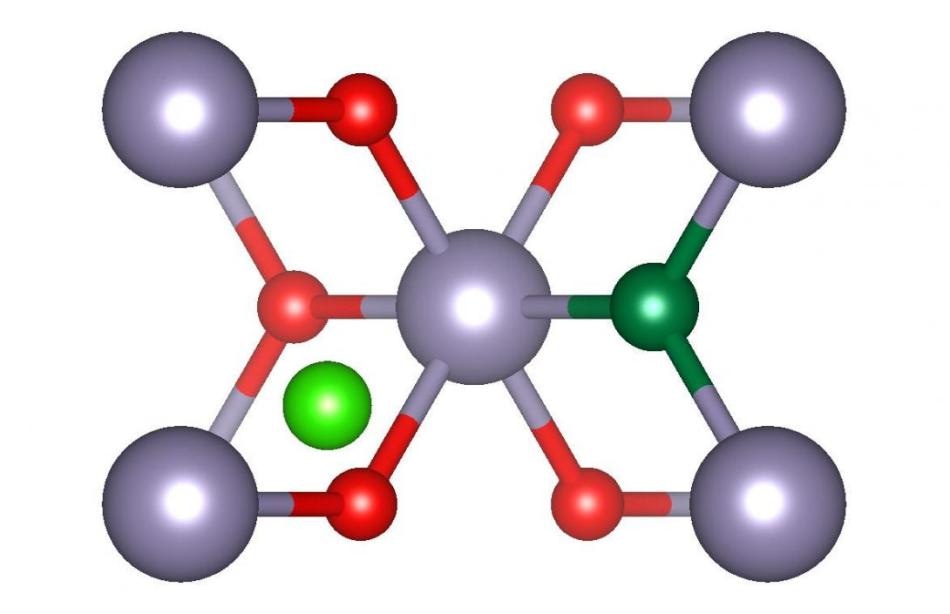An invention with the potential to enhance the conductivity of a kind of glass coating used on objects such as solar cells, touch screens and energy-efficient windows has been made by scientists from the University of Liverpool.

Compensating acceptor fluorine interstitials (light green) dramatically reduce electronic performance of tin dioxide transparent conducting glass coatings doped with fluorine atoms (dark green). Credit: University of Liverpool
In general, the glass in such objects is applied with coatings to render them electrically conductive and also enabling penetration of light. One of the elements used in commercial, inexpensive glass coatings is fluorine doped tin dioxide, due to its potential to conduct electrical charge and enable the entry of light at the same time. However, it appears that tin dioxide possesses hitherto unused ability for enhanced performance.
Physicists have established the property that restricted the conductivity of fluorine doped tin dioxide, which actually should have been highly conductive given the fact that each of the fluorine atoms replaced on oxygen lattice sites are anticipated to provide an additional free electron for assisting the conductivity. They have reported the results in a paper “Self-compensation in transparent conducting F doped SnO2” published in the Advanced Functional Materials journal.
The researchers adopted a mix of theoretical and experimental data and reported that when two fluorine atoms offer an additional free electron, a third one occupies a usually unoccupied lattice position in the crystal structure of tin dioxide.
Every “interstitial” fluorine atom seizes one free electron and thus turns negatively charged, thereby minimizing the electron density 50% and also leading to increased scattering of the free electrons left behind. This results in restriction of the conductivity of fluorine doped tin dioxide as against what is otherwise feasible.
Identifying the factor that has been limiting the conductivity of fluorine doped tin dioxide is an important discovery and could lead to coatings with improved transparency and up to five times higher conductivity, reducing cost and enhancing performance in a myriad of applications from touch screens, LEDs, photovoltaic cells and energy efficient windows.
Jack Swallow, PhD Student, Department of Physics and The Stephenson Institute for Renewable Energy
At present, the team plans to overcome the problem of finding substitutive dopants with the potential to solve the intrinsic drawbacks.
The study was performed by physicists at the University and the Surrey Ion Beam Centre in partnership with computational chemists from University College London and NSG Group, a global glass manufacturer. The research was funded by an Engineering and Physical Sciences Research Council grant and the EPSRC’s Centre for Doctoral Training in New and Sustainable Photovoltaics.
*Original article online at https://www.azom.com/news.aspx?newsID=48484
